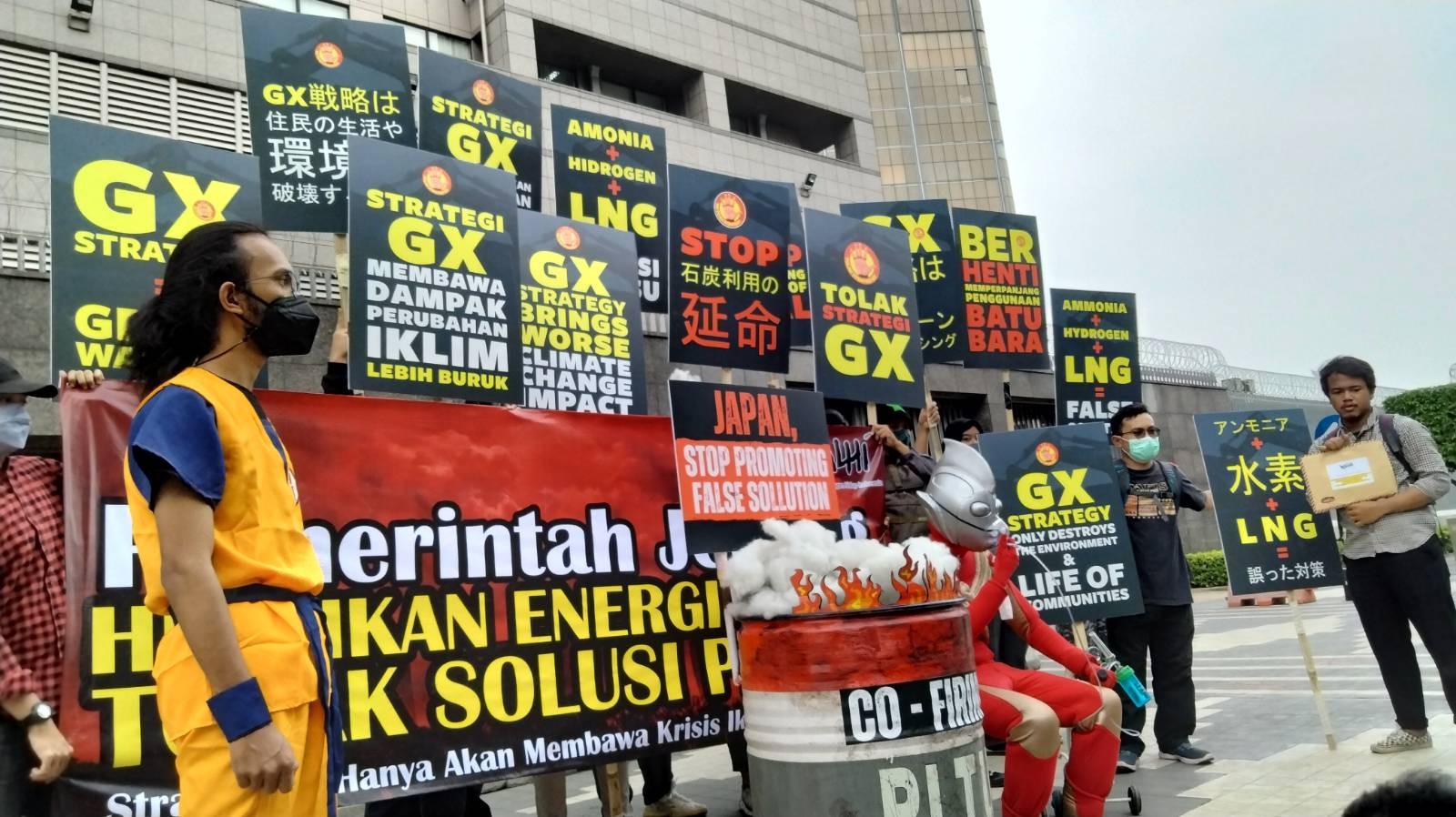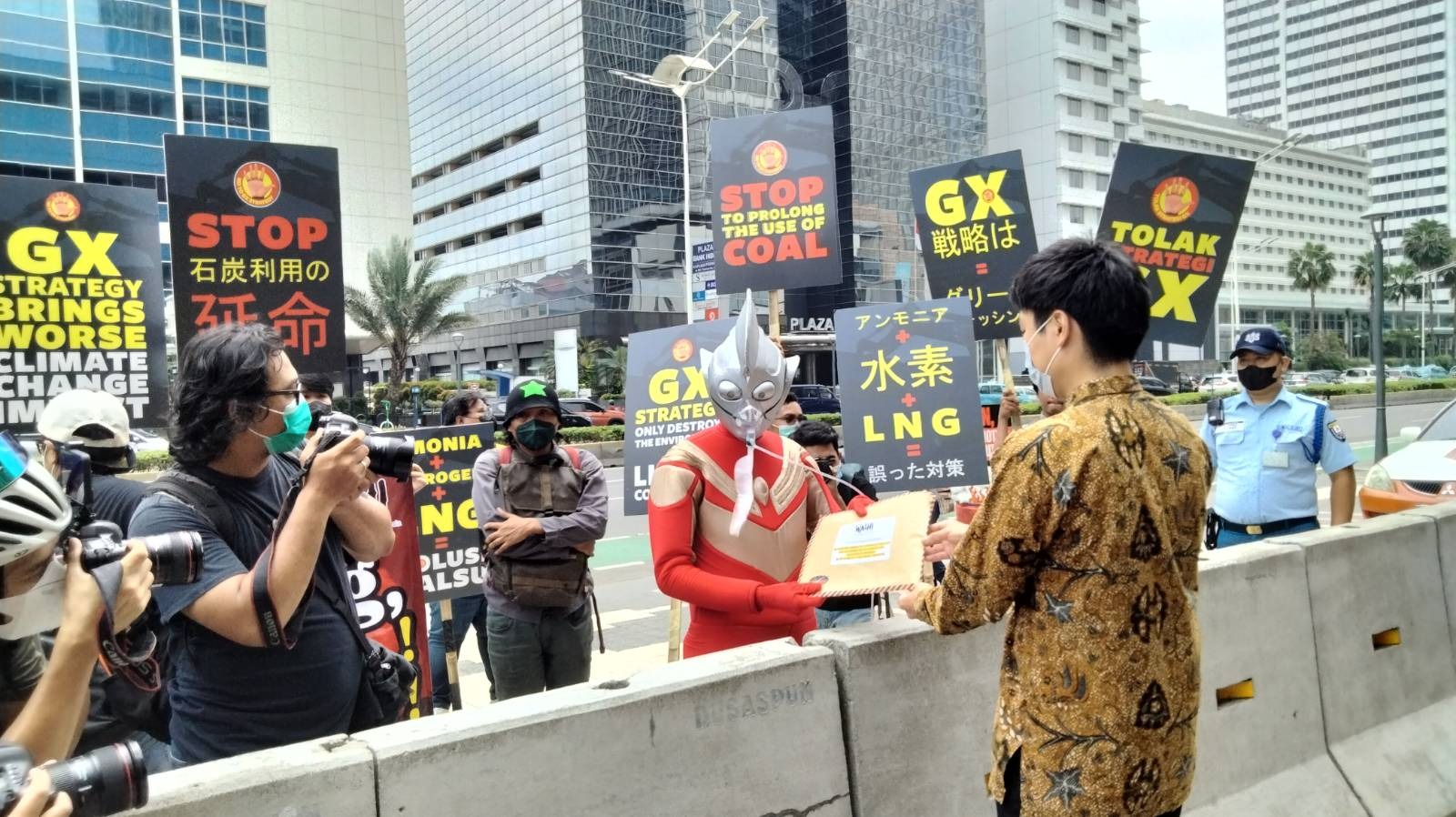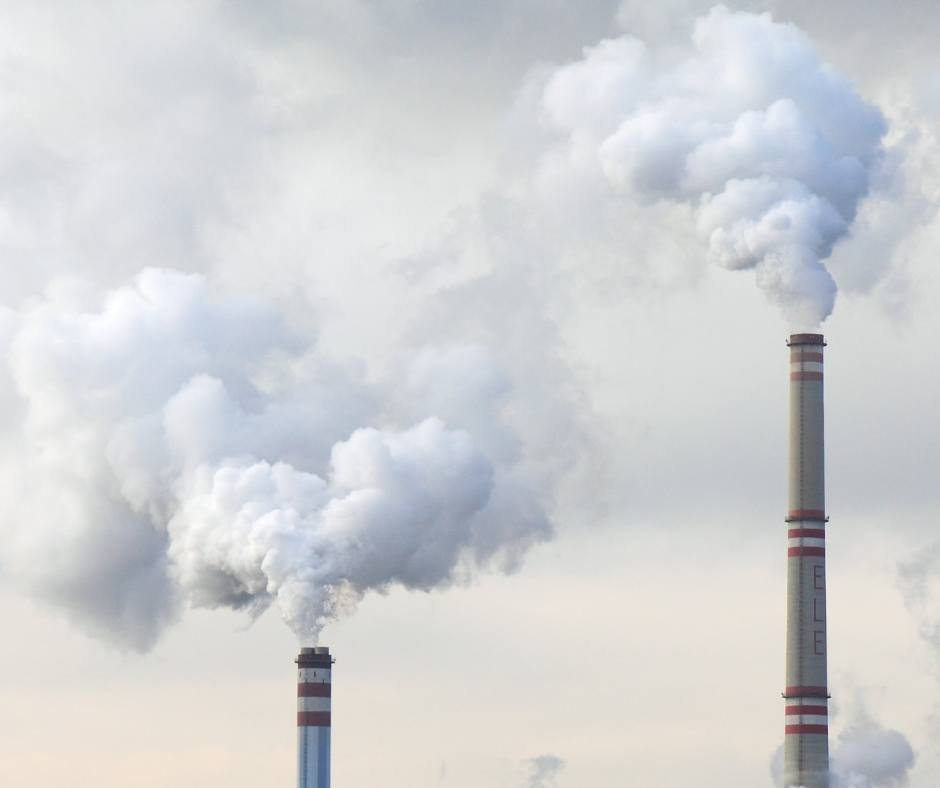Indonesian CSOs Submit a Petition to the Japanese Government: "No more prolonging the lifespan of fossil fuel and destroying the environment and livelihoods in Indonesia in the name of a 'Just Energy Transition'"


November 1, 2022
Mr. KISHIDA Fumio, Prime Minister
No more prolonging the lifespan of fossil fuel
and destroying the environment and livelihoods in Indonesia
in the name of a “Just Energy Transition"
We, the undersigned, are Indonesian civil society organizations with great concerns about the energy transition and assistance to developing countries, which is one of the main agenda at the 27th session of the Conference of the Parties (COP 27) to the United Nations Framework Convention on Climate Change (UNFCCC) in Egypt and G20 Leaders’ Summit in Indonesia to be held this November. We are particularly paying close attention to Indonesia, where the United States and Japan are reportedly leading negotiations for the “Just Energy Transition Partnership" (JETP)[1].
On the other hand, we have a strong sense of crisis about the support that the Japanese government, together with Japanese companies, has been promoting/is planning to promote in the discussion on energy transition. The energy transition should be a transition to sustainable and renewable energy based on the needs and consensus of each local community.
First, in the Memorandum of Cooperation signed with the Government of Indonesia in January of this year, the Government of Japan recognizes that cooperation on hydrogen, fuel ammonia, and Carbon Capture and Storage (CCS)/Carbon Capture Utilization and Storage (CCUS) is important to achieve “realistic energy transitions"[2].
In addition, the Japan International Cooperation Agency (JICA) commissioned Japanese companies (TEPCO Power Grid, Inc. (TEPCO PG), Tokyo Electric Power Company Holdings, Inc. (TEPCO HD), JERA Co., Inc. (JERA), Tokyo Electric Power Services Co., Ltd (TEPSCO)) to complete the “Data Collection Survey on Power Sector in Indonesia for Decarbonization" in March this year[3]. This study report, which we believe has already been submitted to the Ministry of Energy and Mineral Resources (MEMR) and the State Electricity Company (PLN), presents a roadmap for achieving carbon neutrality by 2060 and proposes the following three priority support measures;
- FS (Feasibility Studies) and demonstration test for ammonia co-firing at coal-fired power plants;
- FS and demonstration test for biomass co-firing at coal-fired power plants;
- Support for institutional design for promotion of co-firing at coal-fired power plants.
As a long-term direction, the proposal also includes the followings;
- Hydrogen thermal power (assuming dependence on imported gas for hydrogen) to be account for a large proportion of the power source mix after 2051
- To position ammonia, hydrogen and LNG (with CCS) as the three main fuels
Moreover, what is very worrisome is that Japanese companies have already announced feasibility studies and pilot projects[4] related to co-firing technology and CCS/CCUS in Indonesia one after another.
These proposals and cooperation are not the energy transition we need. On the contrary, they clearly lead to prolonging the lifespan of fossil fuel energy such as coal and gas. Supporting fuels and technologies, which will not reduce greenhouse gas emissions and are riddled with economic and technological uncertainty[5][6][7][8][9], as necessary for the energy transition is an imposition of the “false solutions”.
Also, from the perspective that serious environmental and social problems have been already occurring at existing coal/gas extractive/development sites and thermal power plants, it should be avoided to prolong the lifespan of fossil fuel energy through co-firing of ammonia, biomass, etc., and CCS/CCUS.
For example, Mitsubishi Heavy Industries, Ltd. (MHI) has already submitted a proposal to the Indonesian government to promote the adoption of biomass co-firing at the existing coal-fired power plants, where a coal plant (Unit 2) in Suralaya, Banten was earmarked for a pilot study[10]. In addition, a feasibility study on ammonia co-firing at the coal-fired power plants in Suralaya, commissioned by the Ministry of Economy, Trade and Industry (METI), is being conducted by MHI, Mitsubishi Corporation, and Nippon Koei Co., Ltd.[11].
In the vicinity of the Suralaya coal power plants, where eight units (4,025 MW in total) have been in operation since the 1st unit began its operation in 1984, residents have been suffering from health damages, such as respiratory diseases, and adverse effects on livelihoods, such as fishing, caused by ash and dust[12]. The longer operation of the Suralaya coal-fired power plants with biomass or/and ammonia co-firing will also prolong the suffering of these residents. Instead of supporting biomass or/and ammonia co-firing, the JETP, the Energy Transition Mechanism (ETM) of the Asian Development Bank (ADB), the Accelerating Coal Transition (ACT) investment program of Climate Investment Funds (CIF) etc. should support the early and complete closure of the Suralaya coal-fired power plant.
Likewise, if the feasibility studies related to co-firing technologies and CCS/CCUS result in extending the lifespan of fossil fuel energy, coal mining will continuously cause serious environmental damage, and more disasters will occur in Indonesia. Currently, almost 5 million hectares of land have become coal mining areas in Indonesia, of which at least nearly 2 million hectares are in forest areas. The massive coal mining in Indonesia that has penetrated into forest areas is due to the large dependence of Indonesia’s electrical energy needs on coal. In 2022, the estimated coal demand needed by PLN for power plant power generation is 119 million tons[13].
Mining operations in forest areas will cause damage to forest areas in the form of deforestation and demolition of rocks and minerals. The clearing of this forest area will eventually cause rainwater runoff to no longer be absorbed, as well as increase the release of soil sediment, as a result, damage to the quality of forest land will encourage sedimentation in river channels and soil instability. In addition, chemical waste from mining in forest areas will damage the quality of groundwater and ultimately reduce the quality of the ecosystem as a whole.
In the case of PT KPC in East Kalimantan province, the company is estimated to have left 71 mining pits that have not been reclaimed, and in 2014, KPC was said to have polluted the Bendili River which caused regional drinking water companies to reduce their clean water production. In addition, this mining operation is also said to have caused damage and flooding of the Bengalon and Sangatta Watersheds last March 2022. Around 17,000 people were affected only in Sangatta, Kutai Timur[14].
The Japanese government and companies should also remember that they have a reasonable responsibility for the early closure of coal-fired power plants in Indonesia. This is especially remarkable in the Java-Bali grid system, where PLN is forecasting 40-60% reserve margins (2021-2030)[15]. There are three large power plants in which Japanese companies (J-POWER, Itochu, Sumitomo Corporation, Kansai Electric Power, Marubeni, and JERA) have invested, the Japan Bank for International Cooperation (JBIC) and/or Nippon Export and Investment Insurance (NEXI) have provided public support, and private banks, such as Mizuho Bank, Sumitomo Mitsui Banking Corporation, and MUFG Bank, have provided financing. These are the Batang coal-fired power plant in Central Java (2,000 MW), which started commercial operation in August this year; Units 5 and 6 of the Tanjung Jati B coal-fired power plant in Central Java (2,140 MW) and Unit 2 of the Cirebon coal-fired power plant in West Java (1,000 MW), which are expected to start commercial operation in the near future. All of the power plants have 25-year power purchase agreements with PLN.
We strongly urge the Japanese government to immediately stop promoting the false solutions to prolong the lifespan of fossil fuel-based energy in the name of energy transition, and to focus its sincere efforts on the early closure of coal-fired power plants, which should become stranded assets as described above.
Please kindly find attached here for the “Values and Principles for a Just and Sustainable Energy Transition in Indonesia" published by Indonesian civil society organizations recently, which we expect you will also look through carefully.
Cc:
Mr. HAYASHI Yoshimasa, Minister for Foreign Affairs
Mr. SUZUKI Shunichi, Minister of Finance
Mr. NISHIMURA Yasutoshi, Minister of Economy, Trade and Industry
Mr. NISHIMURA Akihiro, Minister of the Environment
Mr. TAKEI Shunsuke, State Minister for Foreign Affairs
Mr. YAMADA Kenji, State Minister for Foreign Affairs
Mr. INOUE Takahiro, State Minister of Finance
Mr. AKINO Kozo, State Minister of Finance
Mr. NAKATANI Shinichi, State Minister of Economy, Trade and Industry
Ms. OTA Fusae, State Minister of Economy, Trade and Industry
Ms. YAMADA Miki, State Minister of the Environment
Mr. KOBAYASHI Shigeki, State Minister of the Environment
Mr. TANAKA Akihiko, President, Japan International Cooperation Agency (JICA)
Mr. HAYASHI Nobumitsu, Governor, Japan Bank for International Cooperation (JBIC)
Mr. KURODA Atsuo, Chairman and CEO, Nippon Export and Investment Insurance (NEXI)
Mr. KANASUGI Kenji, Ambassador of Japan to Indonesia
Signatories:
1. Eksekutif Nasional Wahana Lingkungan Hidup Indonesia (WALHI)
2. Eksekutif Daerah WALHI Papua
3. Eksekutif Daerah WALHI Maluku Utara
4. Eksekutif Daerah WALHI Nusa Tenggara Timur
5. Eksekutif Daerah WALHI Nusa Tenggara Barat
6. Eksekutif Daerah WALHI Bali
7. Eksekutif Daerah WALHI Sulawesi Utara
8. Eksekutif Daerah WALHI Sulawesi Tengah
9. Eksekutif Daerah WALHI Sulawesi Tenggara
10. Eksekutif Daerah WALHI Sulawesi Barat
11. Eksekutif Daerah WALHI Sulawesi Selatan
12. Eksekutif Daerah WALHI Kalimantan Timur
13. Eksekutif Daerah WALHI Kalimantan Selatan
14. Eksekutif Daerah WALHI Kalimantan Tengah
15. Eksekutif Daerah WALHI Kalimantan Barat
16. Eksekutif Daerah WALHI Jawa Timur
17. Eksekutif Daerah WALHI Jawa Tengah
18. Eksekutif Daerah WALHI Yogyakarta
19. Eksekutif Daerah WALHI Jawa Barat
20. Eksekutif Daerah WALHI Jakarta
21. Eksekutif Daerah WALHI Lampung
22. Eksekutif Daerah WALHI Bengkulu
23. Eksekutif Daerah WALHI Sumatera Selatan
24. Eksekutif Daerah WALHI Bangka Belitung
25. Eksekutif Daerah WALHI Jambi
26. Eksekutif Daerah WALHI Riau
27. Eksekutif Daerah WALHI Sumatera Barat
28. Eksekutif Daerah WALHI Sumatera Utara
29. Eksekutif Daerah WALHI Aceh
30. Trend Asia
31. Yayasan Lembaga Bantuan Hukum Indonesia (YLBHI)
32. Perkumpulan Sumsel Bersih
33. Perkumpulan Jelata
34. POKJA 30
35. Yayasan Srikandi Lestari
36. Solidaritas Perempuan
37. Indonesian Center for Environmental Law (ICEL)
38. Jaringan Advokasi Tambang (JATAM)
39. AEER
40. 350 Indonesia
41. Greenpeace Indonesia
Contact:
Wahana Lingkungan Hidup Indonesia (WALHI / Friends of the Earth Indonesia)
Address Jln. Tegal Parang Utara No 14, Jakarta Selatan 12790. INDONESIA
email: informasi@walhi.or.id
[1] Jakarta Globe, “G7’s Climate Financing for Indonesia Under Negotiation: Envoy”, October 1 2022, https://jakartaglobe.id/news/g7s-climate-financing-for-indonesia-under-negotiation-envoy
[2] “Memorandum of Cooperation between the Ministry of Economy, Trade and Industry of Japan and the Ministry of Energy and Mineral Resources of the Republic of Indonesia on the Realization of Energy Transitions”, January 2022, https://www.meti.go.jp/press/2021/01/20220113003/20220113003-1.pdf
[3] JICA, “Data Collection Survey on Power Sector in Indonesia for Decarbonization”, Mar 2022 https://libopac.jica.go.jp/images/report/12342481.pdf
[4] IHI, “IHI Initiates Southeast Asia’s First Ammonia Co-Firing Pilot Facility at Operational Power Plant with View to Swift Commercialization Across Region”, October 13 2022, https://www.ihi.co.jp/en/all_news/2022/resources_energy_environment/1198046_3488.html
[5] Kiko Network, “Position Paper: Challenges of Hydrogen and Ammonia”, October 2021, https://beyond-coal.jp/beyond-coal/wp-content/uploads/2021/10/posision-paper-hydrogen-ammonia_english_revised220121.pdf
[6] Robert W. Howarth,Mark Z. Jacobson, ”How green is blue hydrogen?”, August 12th 2021, https://onlinelibrary.wiley.com/doi/full/10.1002/ese3.956
[7] International Energy Agency (IEA), “Global Hydrogen Review 2021”, November 2021, https://iea.blob.core.windows.net/assets/5bd46d7b-906a-4429-abda-e9c507a62341/GlobalHydrogenReview2021.pdf
[8] Renewable Energy Institute, “Bottlenecks and Risks of CCS Thermal Power Policy in Japan”, May 2022, https://www.renewable-ei.org/en/activities/reports/20220520.php
[9] The Institute for Energy Economics and Financial Analysis (IEEFA), “Carbon capture: a decarbonisation pipe dream", September 2022, https://ieefa.org/articles/carbon-capture-decarbonisation-pipe-dream
[10] Mitsubishi Heavy Industries, Ltd., “Mitsubishi Power Presents Proposal on Biomass Co-firing Adoption in Indonesia — Joint Initiative with Indonesia’s PLN Group and Institut Teknologi Bandung –”, March 30 2022, https://www.mhi.com/news/22033001.html
[11] Mitsubishi Heavy Industries, Ltd., “MHI Commences Feasibility Studies on Use of Ammonia for Power Generation in Indonesia — The Two MHI Feasibility Study Proposals Have Been Adopted by Japan’s METI”, June 7 2022, https://www.mhi.com/news/220607.html
[12] Mongabay, “South Korea faces a public reckoning for financing coal plants in Indonesia", April 15 2021, https://news.mongabay.com/2021/04/south-korea-faces-a-public-reckoning-for-financing-coal-plants-in-indonesia/
[13] CNBC Indonesia, “PLN Ramal Batu Bara untuk PLTU di 2022 Naik Jadi 119 Juta Ton", November 15, 2021, https://www.cnbcindonesia.com/news/20211115120324-4-291547/pln-ramal-batu-bara-untuk-pltu-di-2022-naik-jadi-119-juta-ton
[14] Samarinda Pos, “Jatam Dorong KPC Disanksi Pidana: Disebut Picu Banjir Besar di Sangatta, Manajemen Membantah, March 24 2022, https://sapos.co.id/2022/03/24/jatam-dorong-kpc-disanksi-pidana-disebut-picu-banjir-besar-di-sangatta-manajemen-membantah/
[15] The Institute for Energy Economics and Financial Analysis (IEEFA), “Indonesia Wants to Go Greener, but PLN Is Stuck With Excess Capacity From Coal-Fired Power Plants It’s Time for Japanese and Chinese Investors to Step Up and Be Part of the Solutio", November 2021, https://ieefa.org/wp-content/uploads/2021/11/Indonesia-Wants-to-Go-Greener-but-PLN-Is-Stuck-With-Excess-Capacity_November-2021.pdf


